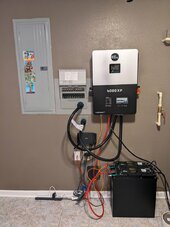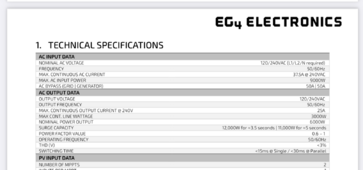Hi all, due in large part to Will Prowse and this forum I took the plunge and ordered a EG4 6000 XP and two EG4 LL-S Lithium Battery | 48V 100AH. I have plans for growing this set up, but in the short term I simply aim to connect it to my breaker panel and use it as a backup.
A transfer switch makes a lot of sense to me and though I'm a complete newb, I'm fairly handy and feel that with care I can diy it. Maybe something like this:
However, and I feel really dumb for having to ask this, how do I connect the AC in? I mean, can you just cut off a the ends of a heavy extension cord, wire it, and plug it into the wall? Do I add a breaker to my main panel and wire it to that? I expect the latter is the way, but I really want to keep this as portable as possible b/c I probably won't be staying in this house for long.
Thanks in advance for any help!
A transfer switch makes a lot of sense to me and though I'm a complete newb, I'm fairly handy and feel that with care I can diy it. Maybe something like this:
However, and I feel really dumb for having to ask this, how do I connect the AC in? I mean, can you just cut off a the ends of a heavy extension cord, wire it, and plug it into the wall? Do I add a breaker to my main panel and wire it to that? I expect the latter is the way, but I really want to keep this as portable as possible b/c I probably won't be staying in this house for long.
Thanks in advance for any help!





